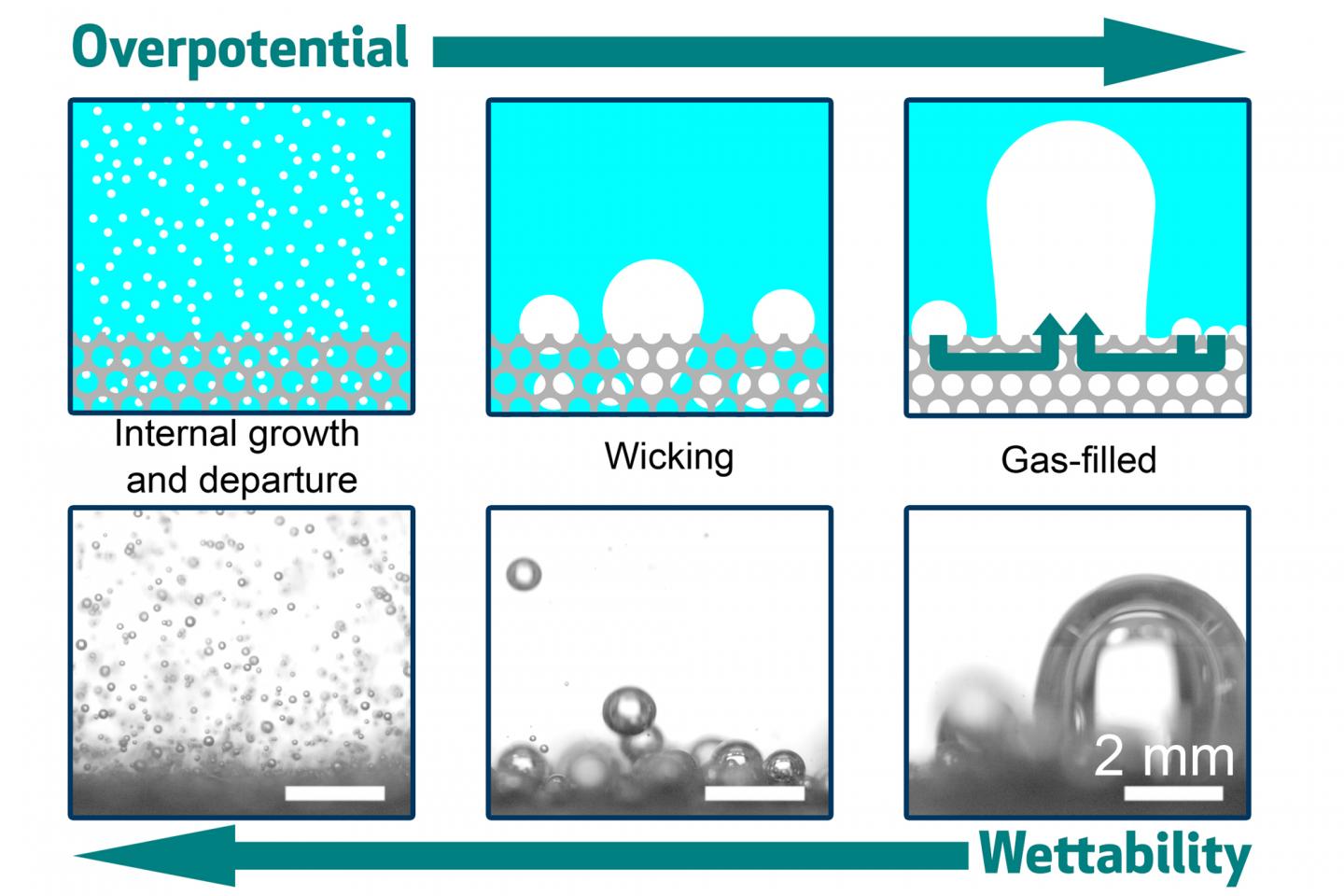
Wet wastes from sewage treatment and discarded food can provide the raw materials for an innovative process called hydrothermal liquefaction, which converts and concentrates carbon-containing molecules into a liquid biocrude. This biocrude then undergoes a hydrotreating process to produce bio-derived fuels for transportation.

This image shows the interplay among electrode wettability, porous structure, and overpotential. With the decrease of wettability (moving left to right), the gas-evolving electrode transitions from an internal growth and departure mode to a gas-filled mode, associated with a drastic change of bubble behaviors and significant increase of overpotential.